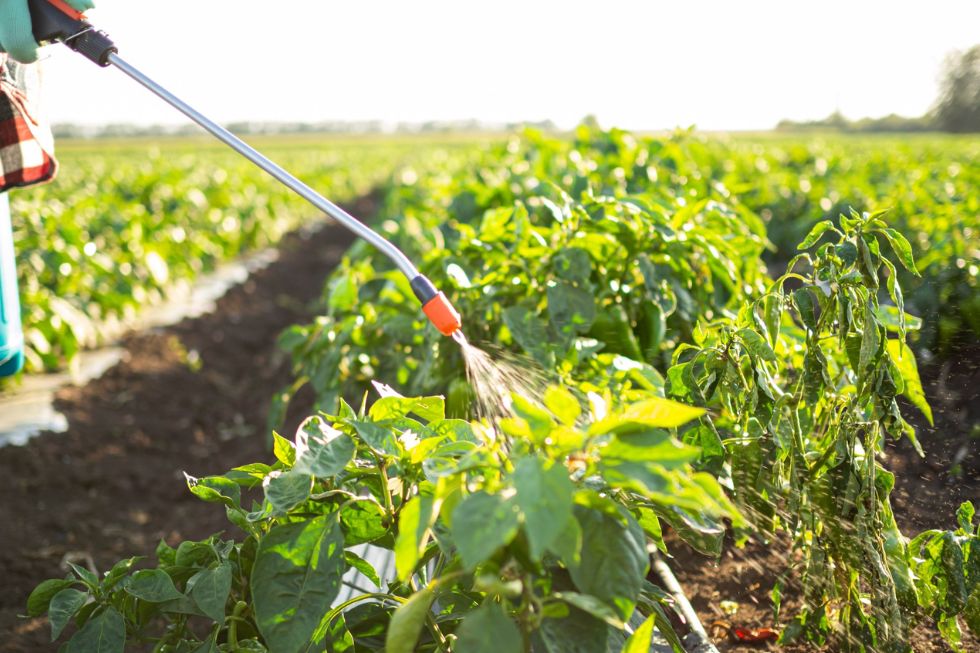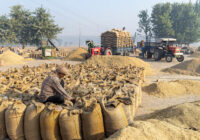Recent studies and evidence from around the world are sounding a clear alarm that continued dependence on chemical pesticides in agriculture is undermining human health, economic stability and ecological integrity. The time has come to shift toward biopesticides, eco-friendly agents derived from natural organisms or substances, which offer sustainable, effective and economically viable alternatives for pest control. This transition is no longer just a technical recommendation; it is a scientific and ecological imperative guided by the “One Health” framework that links human, animal, plant and environmental health.
The global pesticides market, currently valued at $109.5 billion in 2024, is projected to reach $171.7 billion by 2033, representing a compound annual growth rate (CAGR) of 5.1% from 2025 to 2033. Researchers have documented the adverse effects of pesticides in several locations worldwide. For example, the Malwa region of Punjab, India, is facing an unprecedented crisis in environmental health, linked to the indiscriminate, excessive and unsafe use of pesticides, as well as poor groundwater quality. The region has been described as India’s “cancer capital” due to an abnormally high number of cancer cases, which have increased 3-fold in the last 10 years. Studies of this region have also highlighted a sharp increase in many other pesticide-related diseases, such as mental retardation and reproductive disorders. Agricultural workers who directly come into contact with pesticides are the most affected individuals.
Biodiversity at risk
Chemical pesticides pose both direct and indirect risks to human health. Numerous studies have confirmed associations between pesticide exposure and neurological disorders, respiratory ailments, endocrine disruption, and cancer. Farmworkers and rural residents are especially vulnerable. A comprehensive meta-analysis found strong links between chronic pesticide exposure and increased risk of Parkinson’s disease. In India, field-level studies conducted by the Indian Council of Medical Research (ICMR) have reported the accumulation of pesticide residues in soil and water, which impacts both human and livestock health.
Chemical pesticides rarely remain confined to their target areas. They leach into groundwater, pollute rivers and accumulate in the food chain. The Catham House estimates that less than 2% of applied pesticides reach their target pests — the remainder affects non-target organisms and ecosystems. These include beneficial insects, aquatic life, pollinators and birds. A landmark study in Cell linked widespread pesticide use to massive declines in beneficial insect populations across Europe, with severe implications for pollination services and food security.
The loss of biodiversity due to chemical pesticides is deeply concerning, especially in the context of climate change. Soil microbial communities are essential for nutrient cycling, plant health and carbon sequestration and are particularly sensitive to chemical interference. A recent study in SN Applied Sciences reported that exposure to glyphosate, a widely used herbicide, reduced microbial diversity in soil by up to 50%. This compromises soil fertility and weakens resilience to droughts, pests and diseases. Pesticide-driven collapse of predator–prey relationships among insects has also created a dangerous dependency on synthetic chemicals, perpetuating resistance and ecological imbalance.
Economic rationale for biopesticides
While biopesticides were once considered less effective than chemical alternatives, this perception is changing fast. Though biopesticides may have shorter residual activity, they typically require fewer applications and impose far lower health and environmental externalities. A European Commission impact study found that reducing chemical pesticide use by 50%, instead of using bio-pesticides as proposed in the EU Farm to Fork Strategy, could preserve yields while improving long-term public health and environmental quality.
In India, a nationwide survey by MANAGE in organic and natural farming clusters revealed that farmers using neem-based and microbial biopesticides incurred lower input costs and earned higher net returns, largely due to better pest control and premium prices for pesticide-free produce.
Innovations in bio-based solutions
Technological advances are rapidly addressing previous limitations of biopesticides. Nano-biopesticides, such as nano-encapsulated plant extracts or microbial agents, offer improved stability, targeted delivery and extended shelf life. A 2025 study found that nano-formulated Bacillus thuringiensis biopesticides were two to three times more effective than conventional formulations and posed minimal risk to non-target organisms.
Biopesticides are especially effective when integrated into broader pest management systems. Integrated Pest Management (IPM), which combines crop rotation, biological controls, habitat diversification and biopesticides, has proven to be a robust and ecologically sound approach to pest management. A global review in Nature confirmed that IPM-based redesigns of agricultural systems often lead to both yield stability and biodiversity recovery.
Momentum in policy and practice
Global policy increasingly reflects this transition, as the European Union commits to halving pesticide use and risk by 2030. Many countries set similar targets — a study published in Nature advocates for urgent investment in biopesticide innovation and ecological pest management. The National Academy of Sciences study also highlighted the harmful effects of chemical pesticides on children’s and women’s health in America. India’s National Mission on Sustainable Agriculture promotes the use of biocontrol agents, but real progress depends on regulatory reform, investment in quality control and practical farmer training.
Still, challenges remain, including a lack of awareness, inadequate extension services, limited availability of certified biopesticides and market entry barriers for startups. Overcoming these requires a coordinated approach involving public–private partnerships, regulatory incentives and international and local cooperation.
Biopesticides and the One Health vision
The One Health framework compels us to see the health of people, animals, plants and ecosystems as interconnected. A pesticide that harms bees also endangers food production. A fungicide that disrupts soil fungi reduces carbon storage. A herbicide that contaminates rivers poses a threat to both aquatic life and public health.
Biopesticides, by contrast, offer a regenerative pathway. They support biodiversity, reduce toxic exposure and enhance climate resilience. Their adoption, integrated into agroecological systems, can restore balance and reduce agriculture’s ecological footprint.
The evidence is unequivocal. The health, ecological and economic costs of continuing with toxic chemical pesticides are too high to ignore. Biopesticides are no longer marginal alternatives but are now scientifically validated and economically sound tools for the future of agriculture. Supporting their adoption through policy, scientific and market reforms is not just desirable, but necessary. Working with nature, rather than against it, is the most effective approach.
[Liam Roman edited this piece.]
The views expressed in this article are the author’s own and do not necessarily reflect Fair Observer’s editorial policy.
Support Fair Observer
We rely on your support for our independence, diversity and quality.
For more than 10 years, Fair Observer has been free, fair and independent. No billionaire owns us, no advertisers control us. We are a reader-supported nonprofit. Unlike many other publications, we keep our content free for readers regardless of where they live or whether they can afford to pay. We have no paywalls and no ads.
In the post-truth era of fake news, echo chambers and filter bubbles, we publish a plurality of perspectives from around the world. Anyone can publish with us, but everyone goes through a rigorous editorial process. So, you get fact-checked, well-reasoned content instead of noise.
We publish 3,000+ voices from 90+ countries. We also conduct education and training programs
on subjects ranging from digital media and journalism to writing and critical thinking. This
doesn’t come cheap. Servers, editors, trainers and web developers cost
money.
Please consider supporting us on a regular basis as a recurring donor or a
sustaining member.
Will you support FO’s journalism?
We rely on your support for our independence, diversity and quality.










Comment